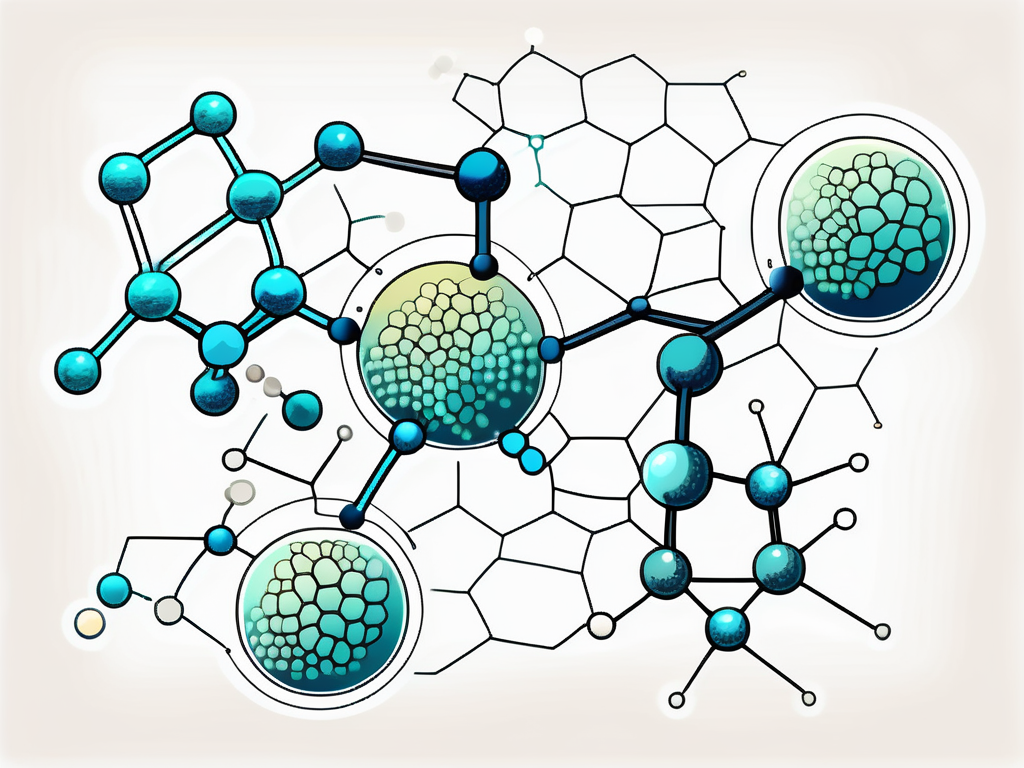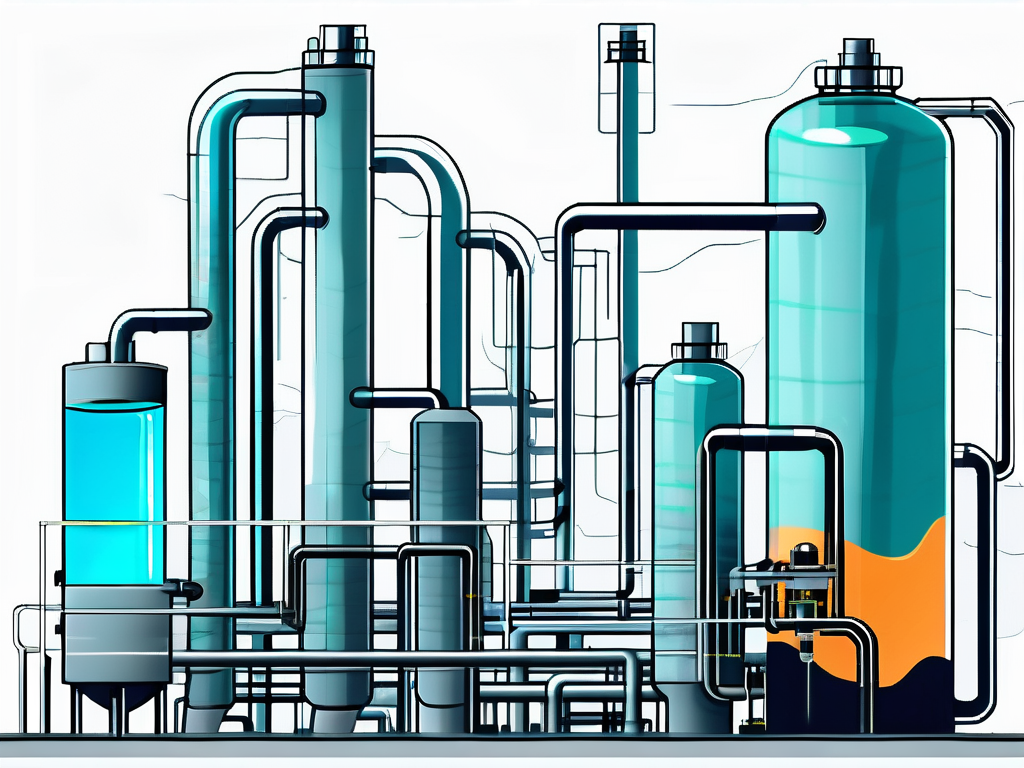
Xenobiotic Compounds: Wastewater Treatment Explained
The term "xenobiotic" is derived from the Greek words "xenos" (stranger) and "bios" (life). Xenobiotic compounds refer to synthetic chemicals that are not naturally occurring and are often found in the environment due to human activities. These compounds can be harmful to living organisms and ecosystems, hence the need for their removal from wastewater before it is released back into the environment.
Wastewater treatment is a complex process that involves various stages and techniques to remove contaminants, including xenobiotic compounds. This article provides a comprehensive glossary on xenobiotic compounds in the context of wastewater treatment, detailing the types of xenobiotics, their sources, effects, and the various methods used in their removal from wastewater.
Understanding Xenobiotic Compounds
Xenobiotic compounds encompass a wide range of synthetic chemicals that are not naturally produced by organisms. These include pharmaceuticals, personal care products, pesticides, industrial chemicals, and more. Due to their synthetic nature, xenobiotics are often resistant to natural degradation processes, making them persistent in the environment.

These compounds enter the environment through various routes, including industrial effluents, agricultural runoff, and domestic wastewater. Once in the environment, xenobiotics can have detrimental effects on ecosystems and human health, making their removal from wastewater crucial.
Types of Xenobiotic Compounds
There are numerous types of xenobiotic compounds, each with unique chemical structures and properties. Some common types include pharmaceuticals (e.g., antibiotics, hormones), personal care products (e.g., fragrances, sunscreens), pesticides (e.g., herbicides, insecticides), and industrial chemicals (e.g., solvents, dyes).
Each type of xenobiotic has different impacts on the environment and human health, depending on their chemical properties, concentrations, and persistence in the environment. For instance, some xenobiotics are endocrine disruptors, interfering with hormone systems in organisms, while others can be carcinogenic or toxic.
Effects of Xenobiotic Compounds
The effects of xenobiotic compounds on the environment and human health can be severe and long-lasting. Due to their resistance to natural degradation processes, xenobiotics can accumulate in the environment and in organisms, leading to bioaccumulation and biomagnification.
Bioaccumulation refers to the accumulation of substances, such as xenobiotics, in an organism from its surroundings, while biomagnification refers to the increase in concentration of a substance in a food chain. This can lead to toxic effects in organisms, including humans, at higher levels of the food chain.
Environmental Impact
Xenobiotics can have various detrimental effects on the environment. They can affect the growth and reproduction of organisms, disrupt ecosystems, and reduce biodiversity. For instance, some pesticides can be toxic to non-target organisms, affecting insect populations and subsequently bird populations that rely on these insects for food.
Furthermore, xenobiotics can contaminate water bodies, affecting aquatic life and water quality. Some xenobiotics can also degrade into other harmful compounds, further exacerbating their environmental impact.
Impact on Human Health
Xenobiotics can also pose significant risks to human health. Exposure to these compounds can occur through various routes, including ingestion of contaminated food or water, inhalation of contaminated air, and dermal contact with contaminated water or soil.
Depending on the type and concentration of xenobiotic, health effects can range from acute effects, such as nausea and skin irritation, to chronic effects, such as cancer and endocrine disruption. Some xenobiotics can also interfere with the function of vital organs, such as the liver and kidneys.
Wastewater Treatment and Xenobiotic Removal
Wastewater treatment involves various processes to remove contaminants, including xenobiotics, from wastewater. These processes can be physical, chemical, or biological, and are often used in combination to achieve optimal removal efficiency.
The choice of treatment process depends on the type and concentration of xenobiotics present in the wastewater, as well as the desired quality of the treated wastewater. Some common treatment processes include coagulation/flocculation, sedimentation, filtration, disinfection, and biological treatment.
Physical and Chemical Treatment Processes
Physical treatment processes involve the removal of contaminants based on their physical properties. This includes processes such as sedimentation, where contaminants settle at the bottom of a treatment tank due to gravity, and filtration, where contaminants are removed as the wastewater passes through a filter.
Chemical treatment processes involve the use of chemicals to remove contaminants. This includes processes such as coagulation/flocculation, where chemicals are added to the wastewater to cause contaminants to clump together and settle out, and disinfection, where chemicals or other methods are used to kill or inactivate harmful microorganisms.
Biological Treatment Processes
Biological treatment processes involve the use of microorganisms to degrade contaminants. This includes processes such as activated sludge, where microorganisms are grown in a treatment tank and used to degrade contaminants, and anaerobic digestion, where microorganisms degrade contaminants in the absence of oxygen.
While biological treatment processes can be effective for the removal of many contaminants, they are often less effective for the removal of xenobiotics due to their resistance to biological degradation. Therefore, additional treatment processes may be required for effective xenobiotic removal.
Advanced Treatment Processes for Xenobiotic Removal
Due to the resistance of xenobiotics to conventional wastewater treatment processes, advanced treatment processes are often required for their effective removal. These processes involve the use of advanced technologies and techniques to degrade or remove xenobiotics.
Advanced treatment processes can be physical, chemical, or biological, and are often used in combination with conventional treatment processes to achieve optimal removal efficiency. Some common advanced treatment processes include advanced oxidation processes, adsorption, membrane processes, and bioreactor systems.
Advanced Oxidation Processes
Advanced oxidation processes (AOPs) involve the generation of highly reactive species, such as hydroxyl radicals, to oxidize and degrade contaminants. AOPs can be highly effective for the removal of xenobiotics due to their ability to degrade a wide range of compounds.
There are various types of AOPs, including ozone-based processes, hydrogen peroxide-based processes, and photocatalytic processes. The choice of AOP depends on the type and concentration of xenobiotics present in the wastewater, as well as the desired quality of the treated wastewater.
Adsorption
Adsorption involves the adhesion of contaminants to a solid surface. This process can be effective for the removal of xenobiotics due to their tendency to adsorb to surfaces. Adsorbents used in wastewater treatment include activated carbon, zeolites, and biochar.
The effectiveness of adsorption for xenobiotic removal depends on various factors, including the type and concentration of xenobiotics, the properties of the adsorbent, and the conditions of the treatment process.
Membrane Processes
Membrane processes involve the use of a semi-permeable membrane to separate contaminants from wastewater. These processes can be effective for the removal of xenobiotics due to their ability to reject a wide range of compounds based on their size and charge.
There are various types of membrane processes, including microfiltration, ultrafiltration, nanofiltration, and reverse osmosis. The choice of membrane process depends on the type and concentration of xenobiotics, as well as the desired quality of the treated wastewater.
Future Perspectives and Challenges
While significant progress has been made in the field of xenobiotic removal from wastewater, there are still many challenges to be addressed. These include the development of cost-effective and energy-efficient treatment processes, the management of treatment residues, and the regulation of xenobiotic compounds.

Future research and development in this field will likely focus on the development of novel treatment technologies and techniques, the optimization of existing treatment processes, and the assessment of the environmental and health impacts of xenobiotics. With continued research and innovation, it is hoped that more effective and sustainable solutions for xenobiotic removal from wastewater can be achieved.



